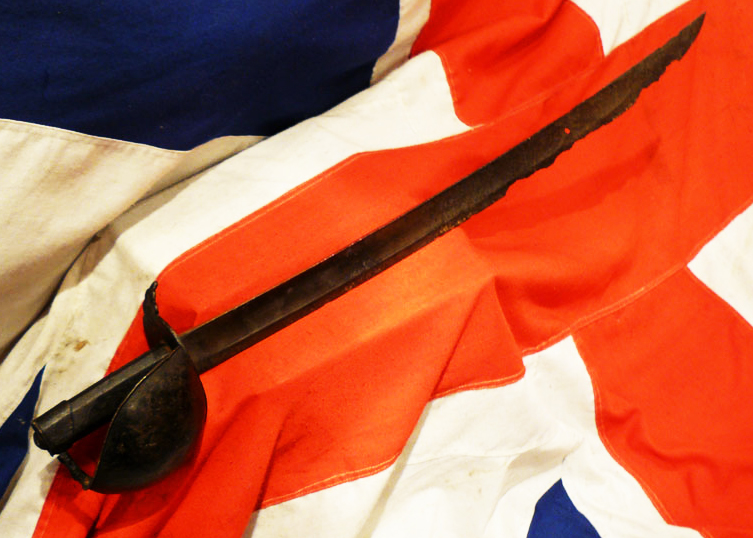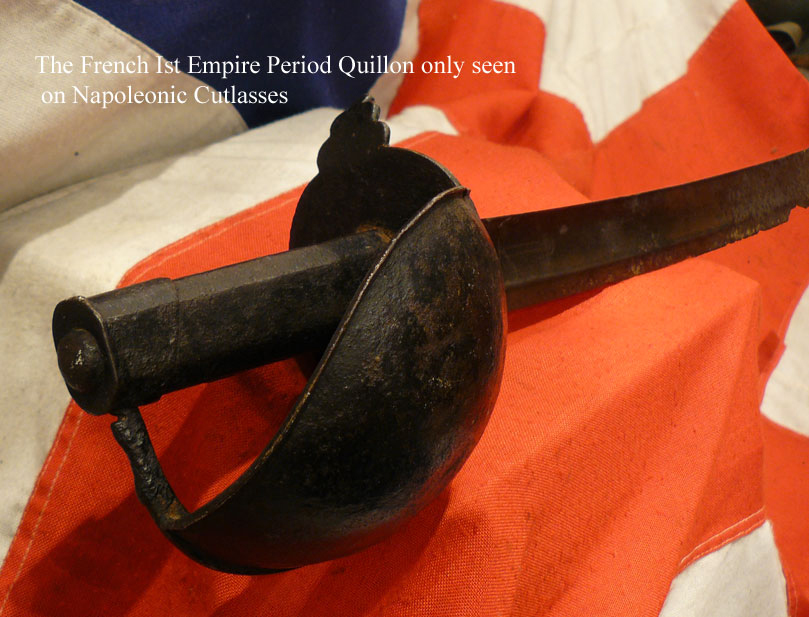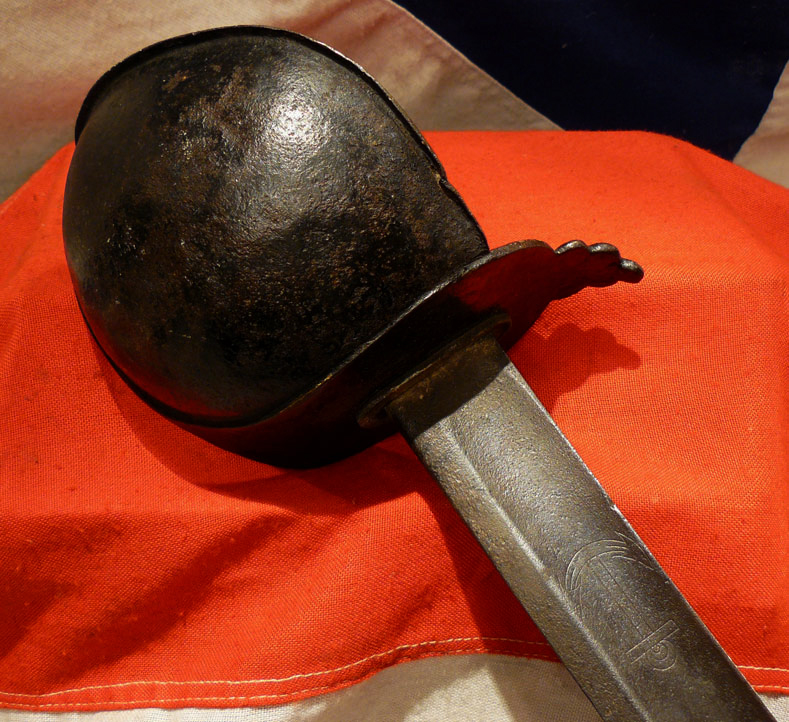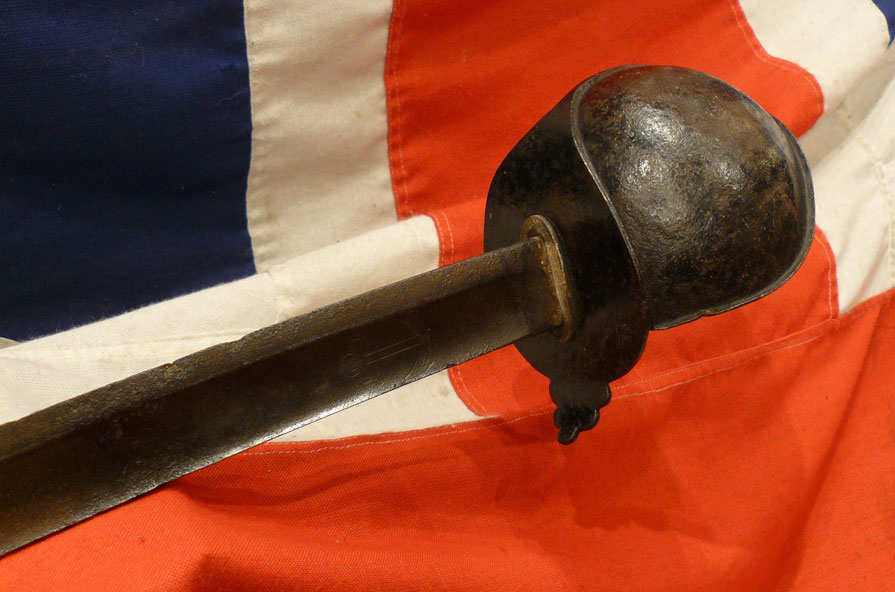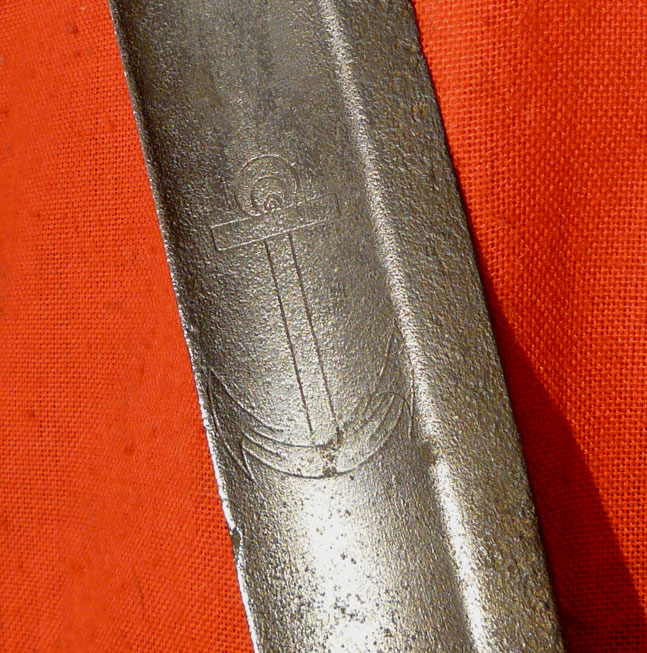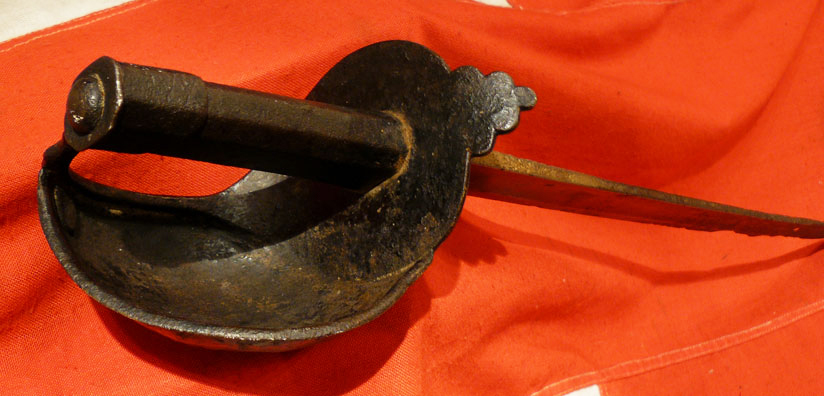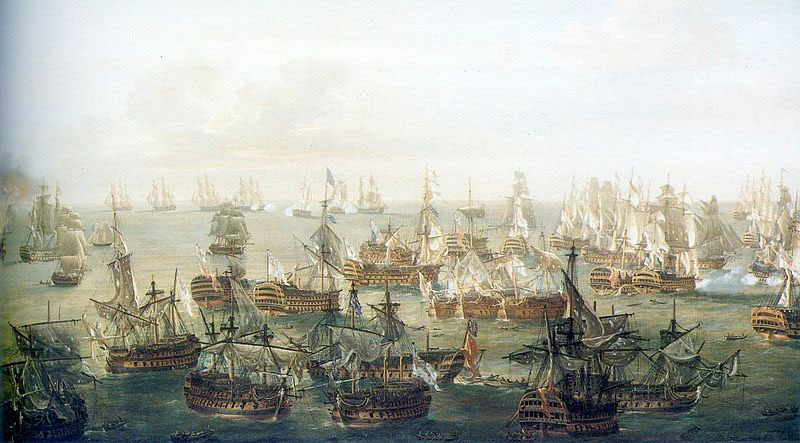A Rare and Original French Battle of Trafalgar Period Napoleonic Naval Cutlass, With Iron Basket Hilt and Steel Blade
With the formed quillon on the guard only ever seen on the Napoleonic French cutlasses. The Sabre du Bord. This is a most scarce sword as most of the French fleet were captured or destroyed during the Napoleonic Wars. The hilt is remarkably sound even complete with it's original paint, the blade has the engraved anchor symbol, but the bottom section has rusted away in parts. Full lenth 678mm blade. The French sabre du bord was the cutlass of the French matelots used in all the French fleet against Nelson at Trafalgar. The Battle of Trafalgar (21 October 1805) was a sea battle fought between the British Royal Navy and the combined fleets of the French Navy and Spanish Navy, during the War of the Third Coalition (August-December 1805) of the Napoleonic Wars (1803-1815).
The battle was the most decisive British naval victory of the war. Twenty-seven British ships of the line led by Admiral Lord Nelson aboard HMS Victory defeated thirty-three French and Spanish ships of the line under French Admiral Pierre-Charles Villeneuve off the south-west coast of Spain, just west of Cape Trafalgar. The Franco-Spanish fleet lost twenty-two ships, without a single British vessel being lost.
The British victory spectacularly confirmed the naval supremacy that Britain had established during the previous century and was achieved in part through Nelson's departure from the prevailing naval tactical orthodoxy, which involved engaging an enemy fleet in a single line of battle parallel to the enemy to facilitate signalling in battle and disengagement, and to maximise fields of fire and target areas. Nelson instead divided his smaller force into two columns directed perpendicularly against the larger enemy fleet, with decisive results.
Nelson was mortally wounded during the battle, becoming one of Britain's greatest war heroes. The commander of the joint French and Spanish forces, Admiral Villeneuve, was captured along with his ship Bucentaure. Spanish Admiral Federico Gravina escaped with the remnant of the fleet and succumbed months later to wounds sustained during the battle.
Code: 20501

